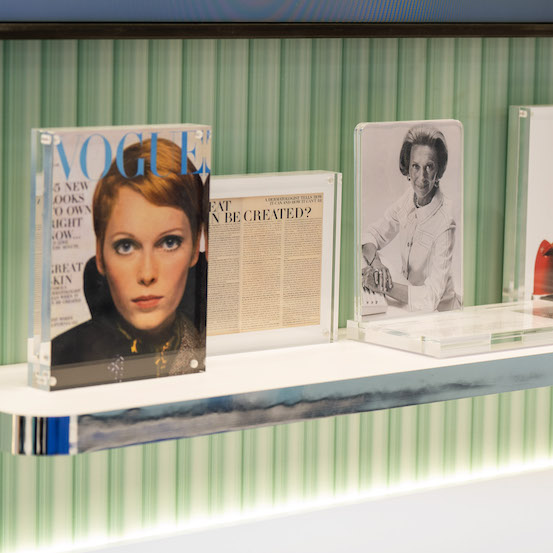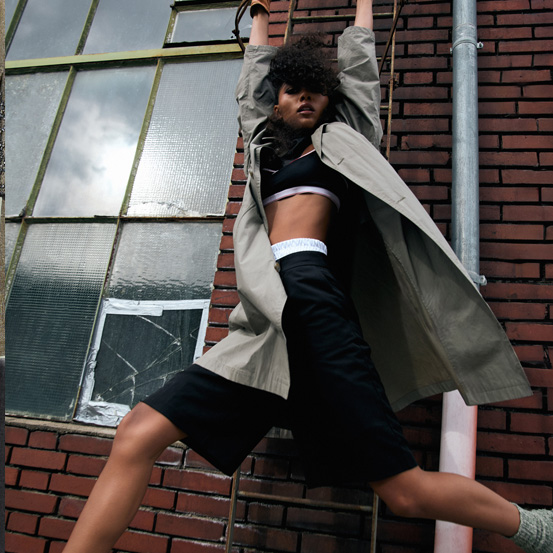From Japanese designers to Finnish couples, sharing a blurred vision of masculine and feminine is now the new norm
From Japanese designers to Finnish couples, sharing a blurred vision of masculine and feminine is now the new norm
Crédito:
GIOVANNI GIANNONI
The sign on the door of the building in Florence’s Fortezza da Basso during Pitti Uomo told the story of dramatic changes in society – spelled out in fashion. ‘Open: Beyond Genders’ it read. While inside, the experimental clothes created a frisson of surprise, in no way could they be described as shocking.
The concept of ‘gender neutral’ has grown fast in the new millennium, with young Asian customers leading the pack by buying the same clothes in a single shop off the same rail. But to find the idea of ‘gender neutral’ as a fashion reality in the world’s largest menswear marketplace is a quiet revolution.
Crédito:
PITTI IMMAGINE UOMO
Two Japanese designers showed together in Florence – but working in different registers. Undercover by Jun Takahashi faced off the gender issue using ankle-length pleated skirts in fine grey wool or bold plaid. They swept the worn stone floor of the Stazione Leopolda, before these female shapes were followed by more futuristic sports clothes, some printed with ‘human error’ or ‘computer malfunction’ and others with plastic hoods covering the face, adding a feeling of ‘outer space’ which echoed Stanley Kubrick’s
2001: A Space Odyssey. The end of the show went back to skirts: long, draped and white, suggesting the gender fluidity of these young men.
Takahiro Miyashita, who titled his collection The Soloist, was just that – following his own track of mixing conventionally tailored and sporty pieces. Male or female? Hard to tell with the faces covered by hoods as if facing a post-apocalyptic future where gender might be irrelevant.
Uma publicação partilhada por Suzy Menkes (@suzymenkesvogue) a 11 de Jan, 2018 às 3:33 PST
What exactly does ‘gender neutral’ mean, when human bodies are drawn in their own natural shapes? I would describe this current look as a deliberate approach of different sexes to make themselves appear similar, or at least not to be defined by clothes that signal a rigid binary view of gender.
Uma publicação partilhada por Suzy Menkes (@suzymenkesvogue) a 10 de Jan, 2018 às 4:11 PST
This was not exactly the case for the American company Brooks Brothers which is celebrating 200 years in fashion – an event worthy of a vast arena, a full orchestra and two walls of Renaissance paintings.
Uma publicação partilhada por Suzy Menkes (@suzymenkesvogue) a 10 de Jan, 2018 às 4:24 PST
The result of CEO Claudio Del Vecchio’s vision was grandiose, dutifully up-to-date with a mix of races on the runway and some female models to prove that this was not all a man’s world. But womenswear designer Zac Posen might have done more, while still focusing on quality, to push gender neutral looks further forward than a woman’s elegantly tailored camel coat and matching skirt. By contrast, the male styling made simple pieces – like a cable-knit cardigan tucked into tailored trousers – look weird. Happy Birthday Brooks Brothers! As the Chairman said, the original founder Henry Sands Brooks was no traditionalist, and this anniversary show could have done with more of his spirit of invention and innovation.
Crédito:
GIOVANNI GIANNONI
Perhaps the successful vision of clothing shared between genders works best when an entire country’s philosophy is to close up the male-female divide. Finland, like other Nordic countries, has a sharing of spirit and action between the sexes. And it seemed natural that among this year’s guest nation for Pitti Immagine, husband and wife team Niina and Timo Leskelä showed with casual style how the same garment can be worn by both men and women.
Crédito:
PROJ3CT STUDIO
Making their designs in neighbouring Estonia and focusing on shades of black in cotton, wool and linen, the duo, whose brand name is Nomen Nescio, explained their philosophy.
“We think ‘humans’ – Finland has been really democratic and we are sexually equal,” said Niina. “There is not so big a difference between men and women. Also, I am the CEO of our brand, which is important to us because we want more women bosses!”
Crédito: NOMEN NESCIO
The designers say that when they make a new piece, they both try it on several times.“So, when I put it on it looks like my coat – it changes with the person who is wearing it,” Niina says, while her husband Timo had put on her trousers that morning.
Crédito:
@SUZYMENKESVOGUE
Perhaps when gender neutrality becomes a reality in each family, the male-female divide – at least in fashion – really will be stitched together.
Most popular


Relacionados

.jpg)




